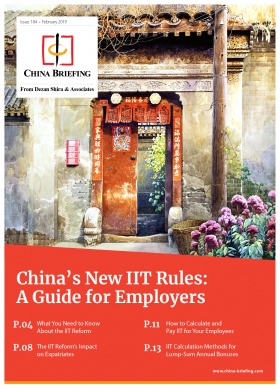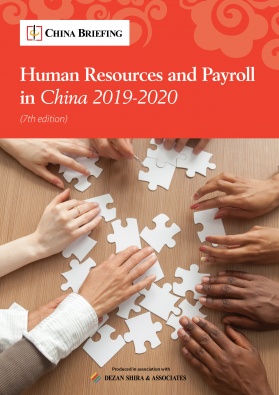China Extends Tax Breaks for Circuit Design, Software Enterprises as Trade War Drags On
On May 22, 2019, the Ministry of Finance and State Administration of Taxation announced an extension to the tax breaks for certain integrated circuit design and software enterprises.
The details of the extended preferential tax policies can be found in Cai Shui [2019] No. 68.
Qualified integrated circuit design and software enterprises will continue to be eligible for corporate income tax (CIT) incentives for the first two years if they become profitable before the end of 2018, and will pay half of their 25 percent CIT rate (that is, 12.5 percent CIT rate) for the third to fifth year.
High-tech industries receive government assistance
Media reports indicate that the Chinese government is attempting to incentivize key high-technology industries amid the uncertainties of the US-China trade war.
As the trade war drags on, the US government has now doubled down on Chinese high-tech firms; Huawei has already been banned from buying American products, and five video surveillance companies are under consideration to be blacklisted.
“The megatrend is that China will have to develop its own chips and software on a large scale to reduce its reliance on the US. We’ll see other support measures and that’s big positive news for China’s technology sector in the long turn”, according to Wu Kan, an investment manager at Soochow Securities in Shanghai.
In response, the Chinese government is moving quickly to support domestic high-tech businesses.
For example, the one-year extension of the preferential tax policy for integrated circuit design and software enterprises allows more businesses to avail of CIT exemptions and tax cuts – previously set to expire in 2022.
As before, enterprises who work predominantly on the manufacturing or design of integrated circuits or software product, and who also satisfy the legal, income, and capability thresholds set out in Article 10 of Cai Shui [2012] No. 27 will be eligible to these preferential policies.
In addition, key enterprises who meet this definition and fall within the national planning layout may be eligible for a further discounted CIT rate of 10 percent.
For more details about the eligibility criteria, businesses should refer to Cai Shui [2016] No. 49 and Cai Shui [2012] No. 27.
How will this affect businesses?
China is restructuring its economy to weather the negative effects of the ongoing trade war. This has increased the pace of regulatory reform as well as the number of investment and tax incentives available to businesses in the country.
Businesses within this industry should consult their tax and accounting teams to determine whether they are eligible to benefit from new tax incentives.
In addition, taxpayers that have already submitted their 2018-19 tax returns should amend their returns to claim refunds.
About Us
China Briefing is produced by Dezan Shira & Associates. The firm assists foreign investors throughout Asia from offices across the world, including in Dalian, Beijing, Shanghai, Guangzhou, Shenzhen, and Hong Kong. Readers may write to china@dezshira.com for more support on doing business in China.
- Previous Article China Unveils 12 Measures to Further Open its Banking and Insurance Sectors
- Next Article Investing in Zhejiang Province: A Quick Guide for Foreign Investors



























